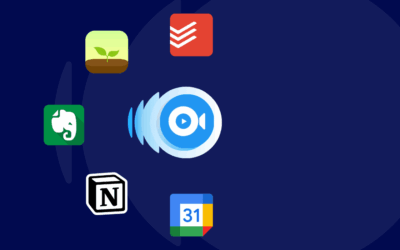Neural Interfaces: The Future of Human-Computer Interaction

Technology is advancing at an incredible pace, and one of the most exciting frontiers is the development of neural interfaces. These brain-computer technologies have the potential to change how humans interact with machines forever. Neural interfaces aim to connect the human brain directly with computers, allowing thoughts to control digital systems without the need for traditional input devices like keyboards, touchscreens, or voice commands. This evolution could lead to a future where communication, control, and even creativity are redefined.
What Are Neural Interfaces?
Neural interfaces, also known as brain-computer interfaces (BCIs), are systems that enable direct communication between the brain and external devices. They can read brain activity and translate it into commands that a computer can understand. These interfaces typically involve the use of electrodes that either sit on the scalp (non-invasive) or are implanted directly into the brain (invasive). The goal is to capture neural signals and use them to control software, machines, or other forms of digital interaction.
There are already working prototypes and devices available today. For instance, brain-controlled prosthetic limbs are being tested with great success, and researchers are experimenting with neural input for typing, controlling wheelchairs, and even navigating virtual environments. Companies like Neuralink, founded by Elon Musk, are leading the way in creating advanced, high-bandwidth interfaces designed to merge human consciousness with artificial intelligence.
How Neural Interfaces Work
The human brain generates electrical activity through neurons. These neurons send signals that can be detected using specialized sensors. In non-invasive setups, these sensors are placed on the scalp to measure brainwave activity. In more advanced applications, electrodes can be implanted directly into brain tissue to capture more precise signals.
Once captured, these signals are processed by software that interprets the brain’s intentions. For example, if a person thinks about moving their hand, the interface detects that pattern and converts it into an action, such as moving a cursor on a screen or manipulating a robotic limb. Machine learning algorithms are often used to improve the accuracy of this signal interpretation over time.
Applications of Neural Interfaces
The potential applications of neural interfaces are vast and go far beyond just controlling computers. One major area of impact is accessibility. People with disabilities who cannot use their limbs or voice can benefit greatly from brain-controlled devices. These technologies can restore independence by enabling communication, mobility, and interaction with the digital world.
In the medical field, neural interfaces are being explored for treating neurological disorders such as Parkinson’s disease, epilepsy, and spinal cord injuries. By delivering targeted electrical stimulation to specific areas of the brain, some conditions can be managed more effectively.
Neural interfaces are also being explored in gaming and entertainment. Imagine playing a virtual reality game using only your thoughts, or controlling your experience in the metaverse through mental commands. This could lead to more immersive and intuitive digital experiences. Meta, for example, has invested heavily in neural interface research to complement its virtual reality and metaverse projects like Meta Quest.
Ethical and Privacy Considerations
As with any advanced technology, neural interfaces raise important ethical questions. One of the biggest concerns is privacy. If devices can read brain signals, there is the potential for misuse. Who owns that data? Can it be hacked? Could companies use neural data for advertising or behavior tracking?
There are also concerns about equity. These technologies may be expensive and initially available only to the wealthy, increasing the gap between those who can enhance their cognitive abilities and those who cannot. Additionally, the idea of implanting devices in the brain may not sit well with everyone. It raises philosophical questions about human identity, consent, and the nature of consciousness.
Regulations will need to evolve to ensure the safe and ethical use of neural interface technology. Policymakers, tech companies, and the public must work together to address these challenges and establish standards that protect users.
The Road Ahead
Despite the challenges, the future of neural interfaces is incredibly promising. Advancements in neuroscience, nanotechnology, and artificial intelligence are accelerating development. What seems like science fiction today may become part of everyday life in the coming decades.
Researchers are working on making interfaces smaller, more accurate, and less invasive. Future versions may be as easy to use as putting on a headset, making the technology more accessible to the general public. As neural interfaces become more refined, they could unlock entirely new ways of learning, communicating, and expressing creativity.
Imagine composing music, designing graphics, or writing code just by thinking. Education could become faster and more immersive. Collaboration could happen at the speed of thought. These possibilities may seem distant, but they are becoming more realistic with each passing year.
Companies such as Neuralink, Kernel, and Meta are investing billions into brain-computer interface research. Universities and research labs around the world are also contributing to our understanding of how the brain interacts with technology. With continued progress, we may soon live in a world where humans and computers are more closely connected than ever before.
Conclusion
Neural interfaces represent a revolutionary leap in human-computer interaction. From medical breakthroughs to immersive virtual worlds, these technologies have the power to transform our lives in ways we are only beginning to imagine. While there are ethical and technical hurdles to overcome, the potential benefits are enormous. The journey is just beginning, and the next decade could be the most transformative in the history of human-machine communication.
















